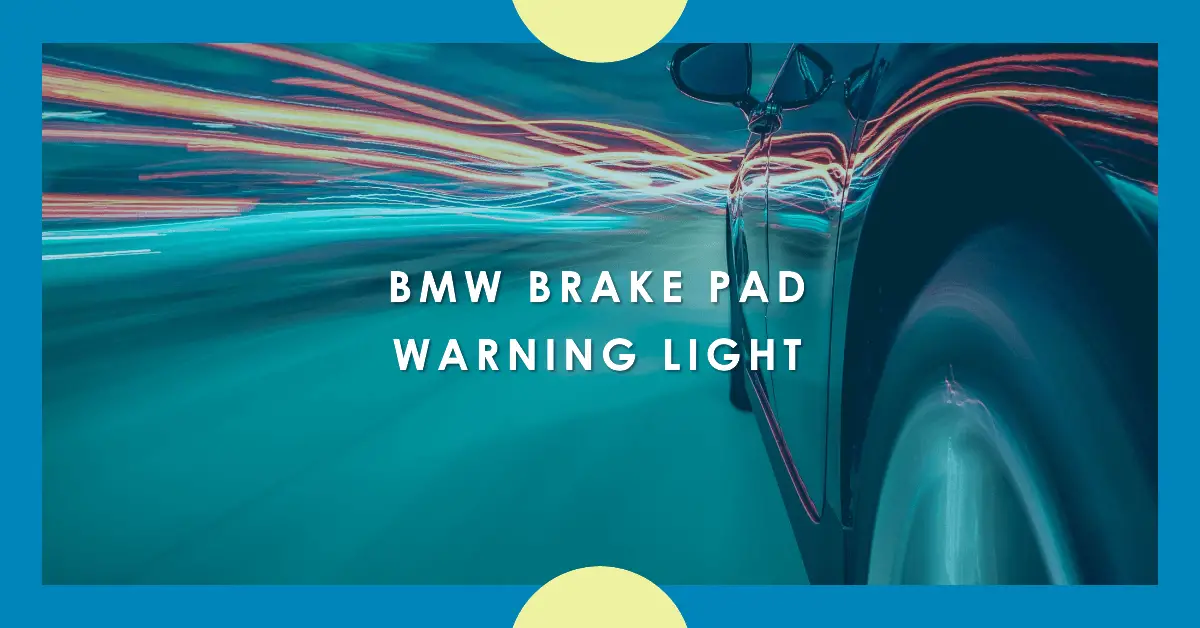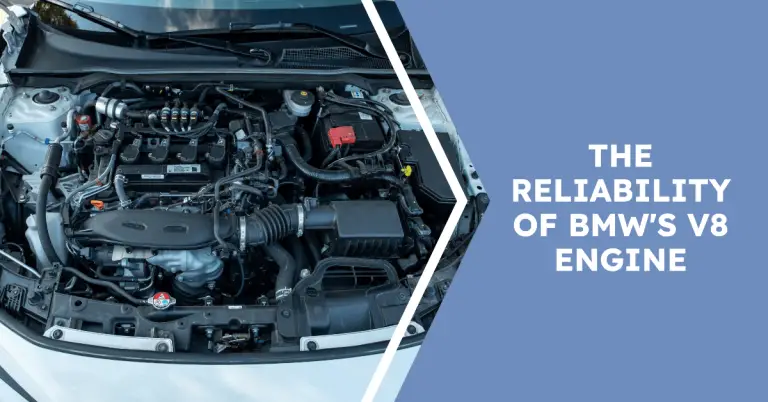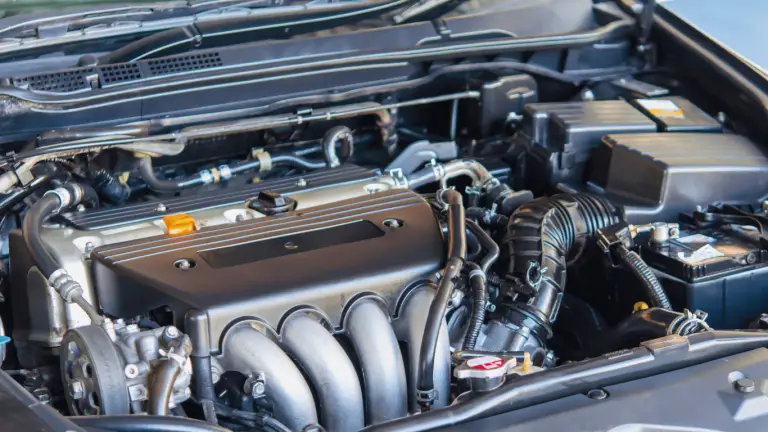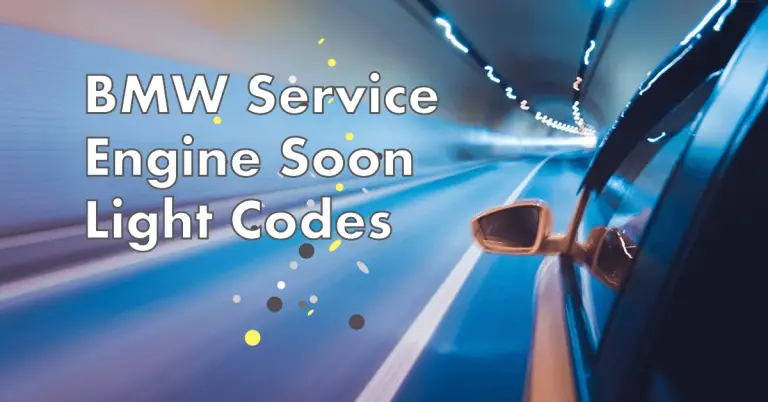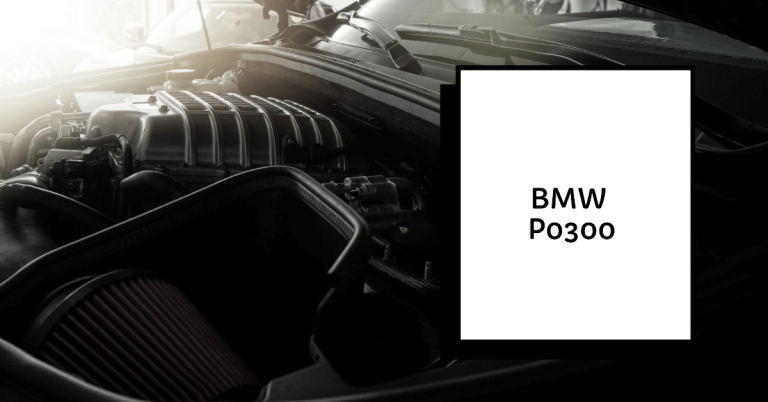BMW Brake Pad Warning Light: What It Means and What to Do
Are you the owner of a BMW who recently had the brake pad warning light pop up on your instrument cluster? That little amber brake symbol can be alarming at first, leaving many BMW owners unsure what it means and if they should continue driving.
The BMW brake pad warning light turning on simply indicates that your brake pad material is getting low, and a pad replacement will be needed soon.
In this detailed guide, we’ll cover everything you need to know about the BMW brake pad warning light. You’ll learn what causes it to come on, when brake pads need replacing, if you can DIY it or should visit a shop, step-by-step instructions for the job, how to reset the light when new pads are installed, and more.
Whether you just want to understand what that new warning light means or you’re ready to tackle a brake pad replacement, read on for a full breakdown.
What Does the BMW Brake Pad Warning Light Mean?
The first question many BMW owners have when they see the new yellow or amber brake pad warning symbol light up on their instrument cluster is, “What does that light mean?”
The brake pad warning light in a BMW alerts the driver that the brake pad material is worn down and nearing the point where the pads will need to be replaced.
Most modern BMW models have wear sensors built into the brake pads themselves. These sensors are designed to detect when the friction material on the pads wears down to a certain minimum thickness – usually around 1 to 3 mm left on the pad.
Once the brake pads are worn down close to the replacement threshold, the sensor will trigger the brake pad warning light to illuminate on the dash. This gives you advance notice that a pad change will be required soon.
Think of the BMW brake pad warning light as your reminder that parts won’t last forever. It’s the car’s way of letting you know it’s time to inspect the brakes and budget for replacement pads in the near future.
What Causes the BMW Brake Pad Warning Light to Come On?
Now that you know the brake pad warning symbol means your pads are worn out, you might be wondering what causes pads to wear down in the first place.
There are a few common reasons you may see the BMW brake pad warning indicator light up:
Normal Brake Pad Wear Over Time
The most obvious cause of worn brake pads is simply using your brakes over tens of thousands of miles. Brake pads are a wear item meant to slowly abrade away with use. As you brake, the pad material gradually wears thinner and thinner.
Most quality brake pads will last 20,000 – 40,000 miles depending on your driving habits. But even with normal use, they’ll eventually reach the end of their service life. The brake pad sensor is there to give you a heads up when that time comes.
Aggressive Driving Style and Conditions
The life span of your BMW’s brake pads can be significantly shortened if you drive aggressively or use the vehicle in performance conditions.
Frequent hard braking, heavy brake pedal pressure, and repeated high-heat braking will accelerate wear. The same goes for tracking or racing your BMW, canyon carving, and spirited mountain driving.
Towing heavy loads, hauling cargo, and other activities that increase brake system demands will also cause premature pad wear. If you put your brakes through more stress, expect to replace pads more often.
Environmental Conditions
Environmental factors like cold weather, wet conditions, salted winter roads, and accumulated brake dust can all contribute to faster pad wear as well.
Pads worn down by any of these causes will trigger the brake warning light once they reach minimum thickness. The warning doesn’t differentiate what led to the wear – just that it’s time to check your pads.
When Should I Replace the Brake Pads on My BMW?
The brake pad warning light is designed to come on when your pads are getting close to the end, but not necessarily right when they reach the point of being unsafe or fully worn out.
Think of the light as your reminder to proactively inspect the brakes and plan for a pad replacement in the near future. But keep driving with care, as you should still have at least a little pad left at this stage.
Here are general guidelines on BMW brake pad replacement intervals once the warning light is illuminated:
- When the light first comes on, you likely have 1-3 mm of pad friction material left. This is your cue to schedule a brake inspection right away.
- During inspection, the pad thickness should be measured. BMW considers pads to be fully worn when just 2 mm or less of pad is left. This is the recommended replacement threshold to prevent damaging rotors or calipers.
- Pads should ideally get changed before they reach 1 mm remaining, when the risks of waiting any longer start to outweigh the benefits.
- If you continue driving once pads are fully worn away, metal backing plate will start grinding the rotors. This can gouge and score rotors, significantly shortening their lifespan and increasing brake replacement costs.
The occasional commute or short trip once the light activates is generally okay. But move quickly to get your BMW’s brake pads replaced. Putting it off for too long risks unnecessary damage and safety issues from worn brakes.
Can I Do a BMW Brake Pad Replacement Myself?
Now that you know what the BMW brake pad warning light means and when pads need changing, the next key question is: should you DIY it or have a professional mechanic handle the brake job?
Replacing brake pads seems straightforward. But as with any car repair, there are pros and cons to both options that are worth weighing:
Pros of DIY BMW Brake Pad Replacement:
- Significant cost savings versus paying a shop’s labor rates
- Convenience of working on your own schedule
- Satisfaction of completing the repair yourself
- Customizing the job to your needs (track pads, etc.)
Cons of DIY Brake Pad Replacement:
- Requires automotive tools many owners don’t have
- Can be challenging without experience doing brake jobs
- Safety critical – improper installation risks failure
- Difficult for many BMW models without service manuals
Pros of Professional Brake Pad Replacement:
- Completed quickly and expertly by technicians
- Dealer/shop handles all parts sourcing
- Additional brake system inspection included
- Test drives and post-repair warranty on work
Cons of Professional Brake Pad Replacement:
- Labor and shop fees increase cost significantly
- Wait for appointment and shop availability
- Risk of unnecessary upsells and pad quality
As you can see, both options have their merits. DIY is less expensive but requires know-how. Shops cost more but provide peace of mind.
In general, brake pad replacement is doable for the home mechanic willing to put in some research and effort upfront. But for those without tools, skills, or time, seeking professional service is wise.
Either way, use quality replacement brake parts designed specifically for your BMW model. Cutting corners with cheap pads risks poor braking and rapid wear. Spending a little more upfront on pads saves money in the long run.
Step-by-Step DIY Instructions for BMW Brake Pad Replacement
Ready to tackle replacing worn brake pads on your BMW? With the right preparation and procedure, it can be completed successfully as a DIY project.
Here is a step-by-step overview of the complete brake pad replacement process on most BMW models:
Safely Jack Up the Vehicle
- Park on a flat, level, hard surface with the transmission in Park and parking brake engaged.
- Loosen the wheel lug nuts, then place a hydraulic floor jack under the jack points near the brake area you’ll be working on.
- Lift the vehicle until the wheel is just off the ground and place a secure jack stand under the chassis.
- Fully remove the lug nuts and wheel. Repeat on all corners as needed.
Remove Brake Caliper Bolts
- Locate the brake caliper bolts that hold the caliper onto the caliper bracket. There are usually two on the rear.
- Using a ratchet, breaker bar, and proper size socket, remove the caliper bolts.
Slide Off the Caliper
- With the bolts removed, carefully pull or pry the caliper off the rotor and secure it out of the way using a bungee or cable.
- Avoid hanging the caliper by the brake hose/line.
Remove Pad Retaining Clips/Hardware
- Note how the brake pads are secured in place, either by retaining clips, guide pins, springs, etc.
- Remove any hardware holding the pad set in the caliper bracket. This will release the pads.
Take Out Worn Pads
- You can now slide the brake pads up and out of the caliper bracket where they sit against the rotor.
- Dispose of the worn pads and set the retaining hardware aside if it will be reused.
Clean and Inspect Key Components
- With the pads removed, take the opportunity to clean the caliper bracket face and lubricate the caliper slides/pins. This ensures smooth operation.
- Visually inspect the brake rotor condition. Resurfacing or replacement may be needed if rotors are heavily scored/gouged.
Install New Brake Pads
- Reference your BMW’s repair manual on proper pad orientation if needed. Pads often have a marking for left/right and inner/outer position.
- Slide the new pads into place in the reverse order you removed the worn set. Secure with retaining springs, clips, etc.
Remount Caliper and Tighten Bolts
- With the fresh pads seated in the caliper bracket, slide the brake caliper back into position over the new pads and rotor.
- Reinsert the caliper bolts and torque them to BMW factory spec using a torque wrench.
Reinstall Wheels and Lower Vehicle
- Place the wheel back on the hub and hand tighten the lug nuts.
- Jack the vehicle back up, torque the lug nuts fully with a torque wrench, then lower onto the ground.
Restore Brake Pedal
- With new pads bedded, the brake pedal may feel soft initially after a bleed. This is normal.
- Pump the pedal repeatedly to restore a firm feel before road testing.
And that covers the complete DIY process for replacing brake pads on a BMW! While involved, it’s very achievable for a home mechanic willing to take their time and follow proper steps.
Always refer to BMW’s repair manual for the exact procedures and torque specs on your specific model and year. Safety is critical whenever working on brakes.
How Do You Reset the BMW Brake Pad Warning Light?
The final step after a DIY or professional brake pad swap is resetting that annoying brake pad warning light on your BMW’s instrument cluster.
Clearing this light is important to extinguish the warning and monitor the new pads. Here are the options for resetting it:
Use a Diagnostic Scan Tool
The simplest approach is to reset the brake pad warning indicator with a BMW-compatible scan tool like Carly, BimmerLink, or GT1. This only takes a few button presses to clear once new pads are installed.
Reset Through BMW Steering Menu
Many modern BMW models allow you to reset the sensor right from the dashboard. Go into vehicle settings menu, find the brake pad reset option, and confirm to clear the light.
Drive Vehicle to Reset
Some BMW brake pad warning systems will reset automatically after driving a short distance for the vehicle to detect the fresh pad set.
Dealer/Shop Reset
If you’re unable to clear the light yourself, any service center can hook up their diagnostic scanner and reset your BMW’s brake pad warning light easily.
If the light stays on after a replacement and attempted reset, further electrical diag may be needed. But in most cases, a scan tool reset or driving the car does the trick.
Preparing for a Brake Pad Replacement on Your BMW
Whether you plan to DIY or have a professional swap pads once your BMW brake warning symbol illuminates, it pays to be proactive. Here are tips to make for smooth sailing when the inevitable brake job arrives:
- Thoroughly research the procedure ahead of time if doing it yourself. Check a repair manual and watch tutorial videos to understand the steps.
- Have the right tools ready to go. At minimum, you’ll need jack and jack stands, ratchets/sockets, torque wrench, brake grease, and basic supplies.
- With brakes, only use quality pads specifically engineered for your BMW model. Stay far away from cheap no-name pads that could fail. Stick to brands like Akebono, Brembo, Hawk, StopTech, EBC, etc. OE BMW pads are also a safe bet.
- Inspect your BMW’s brake rotors when the pads are changed. Have them resurfaced or replaced if deeply gouged or near their wear limit.
- Set aside ample time for DIY brake service. Plan for 2+ hours per axle. Rushing through steps risks mistakes. Take breaks if needed.
- Consider having a second set of hands help for easier caliper retraction, wheel removal, and reaching tight spots if doing it yourself.
- Dispose of old brake parts properly. Pads contain asbestos and heavy metals. Don’t release dust into the environment irresponsibly.
- Road test the vehicle after service, allowing the pads to properly bed-in before hard use. Check for any signs of issues.
With the right preparation and diligence, brake jobs don’t have to be feared. The BMW brake pad warning light is your friend, giving you notice to take action before a small problem becomes a big one.
Conclusion: Don’t Panic When the BMW Brake Pad Light Comes On
Seeing your BMW’s brake warning indicator illuminate for the first time can be alarming. But there’s no need to panic or immediately rush to the dealership.
The brake pad warning symbol simply means it’s time to inspect your BMW’s brake pads and plan for replacement soon, not that you’re in imminent danger or the vehicle is unsafe to drive.
With the explanations, tips, and steps covered here, you now have all the key information about the BMW brake pad warning light.
Knowing what causes it, when to change pads, instructions to DIY or visit a shop, and how to reset the light will make the process straightforward. Performing timely brake service as directed by your BMW helps keep it performing safely.
So take a deep breath when that amber brake pad warning pops up. Understand what it means, then take proactive steps to get fresh pads installed and keep your BMW stopping confidently. With the proper response, it’s just another milestone in your vehicle’s care.

